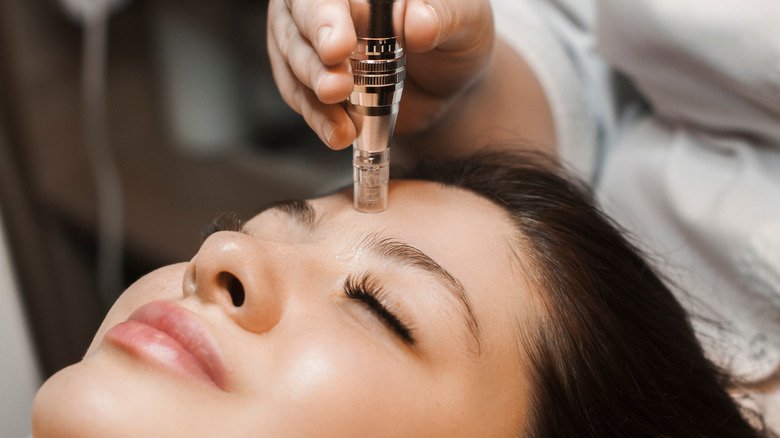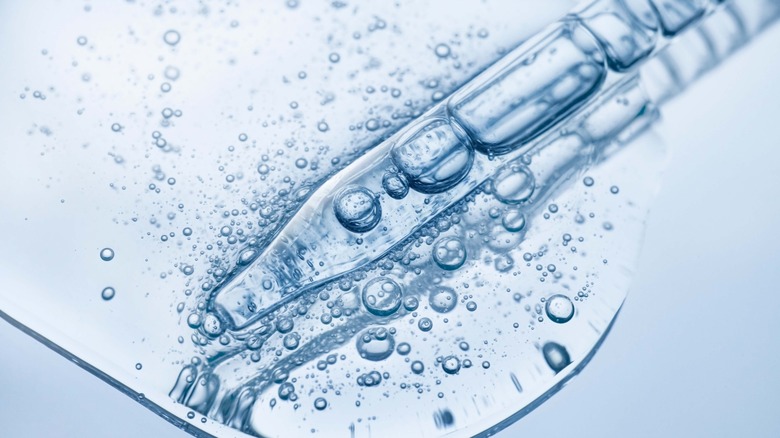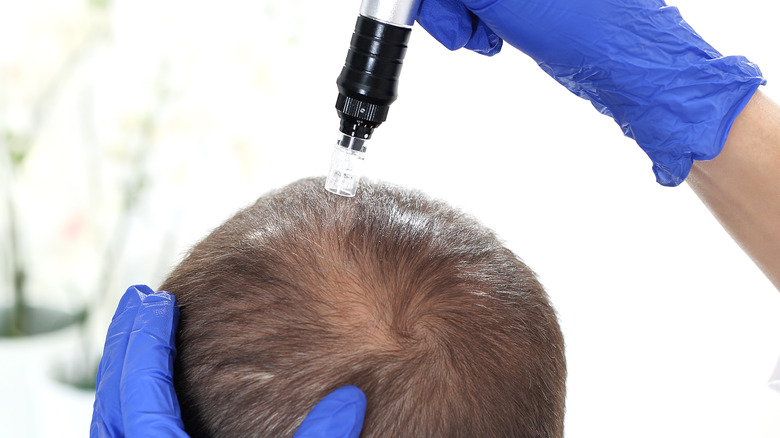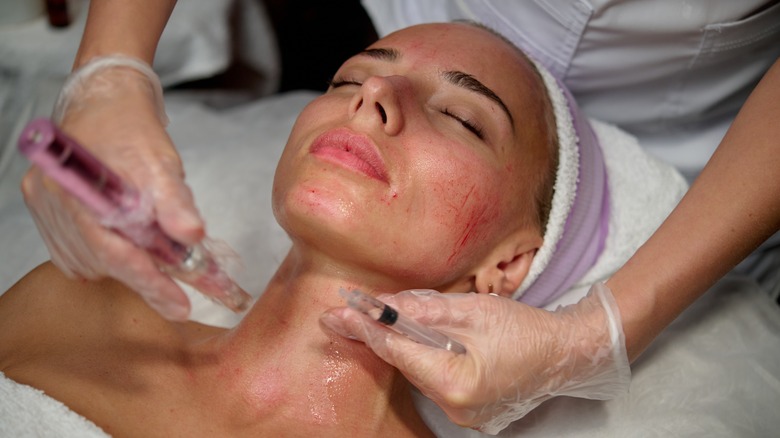What's Exosome Therapy And How Can It Help Your Skin & Hair?
Different stages in life come with various changes in our bodies. In adolescence, there's acne, odor, and body hair to worry about. In adulthood, hormonal changes are prevalent. But with the aging period comes a ton of changes, healthwise and aesthetically. For one, hair loss, which could also arise in younger people due to genetics, medication, or conditions like alopecia. There's also the process of skin aging, where wrinkles, fine lines, and sun spots become more prominent. Hair loss and aging skin change your body's appearance and affect your self-esteem. For some people in this phase of life, this is where cosmetic procedures come in.
From botox to fillers, the quest for slower aging and an ever-youthful glow can be taxing. While some procedures are ineffective and waste money, others, like exosome therapy, have been innovative and effective for people facing hair loss and aging skin. While exosome therapy is a bit new to the scene, it's been hailed by several skin experts as a breakthrough in regenerative cosmetic procedures.
What is exosome therapy?
To understand exosome therapy, you must know exosomes first. Within your body are stem cells, specifically mesenchymal stem cells. These cells need to communicate with other cells to foster normal body functions, like helping with inflammation and neutralizing free radicals. To do this, they produce tiny vesicles containing many growth factors, peptides, and messenger chemicals. These messenger-rich vesicles or nanoparticles are what we know as exosomes, and they aid cell-to-cell communication. The exosomes then transfer certain messenger chemicals and proteins to other cells, thus "delivering the message" and causing the receiver cells to perform a particular function.
Due to their nutrient-rich composition, isolated and purified exosomes can help with hair loss and aging skin by rejuvenating the follicular and dermal cells, thus stimulating hair growth and collagen production. But as tiny and effective as these exosomes are, sometimes they need a little help getting to the deeper layers of your skin for them to work, and that help can be either micro-needling or ultrasound.
While exosome therapy can be done by applying the exosome formula topically, micro-needling — a process of using tiny needles to prick the skin — creates little holes from which the exosomes can gain easier access to the deeper layers of your skin and work better. The ultrasound method uses heat to allow the exosomes to enter your skin and scalp deeper. Either way, exosome therapy has some unique skin and scalp benefits, and here are a few of them.
The skin benefits of exosome therapy
Collagen and elastin are two essential proteins that give structure and elasticity to your skin. And as you age, your collagen production drops, reducing skin elasticity and causing less supple, flexible skin. This is how aging skin occurs and where exosomes do the bulk of their work.
Exosomes work by rejuvenating, or reawakening, a group of skin cells called fibroblasts that reside deep in your dermis and produce collagen. The London Cosmetic Clinic claims exosomes can stimulate your fibroblasts to produce 600% more collagen and 300% more elastin. Higher collagen production equals more youthful, plump skin and fewer wrinkles and fine lines. In addition to increasing collagen production, exosome therapy can also help stimulate skin cellular turnover. If you have no idea what cellular turnover is, it's how your skin sheds dead skin cells and produces new ones to replace them. A higher cellular turnover rate means brighter, plumper skin on the surface all the time.
With their growth factors and peptides, exosomes help in wound healing and can improve wound recovery and the appearance of scars on the skin. Exosome therapy can also help reduce redness and flare-ups with inflammatory skin conditions like eczema and psoriasis and improve and strengthen your moisture barrier.
The hair benefits of exosome therapy
As you age, your skin's collagen production isn't the only thing that slows down. Your hair follicles do, too, with some growing out considerably thinner hair and others ending the hair growth cycle altogether. In addition, sebum production also reduces as you age, leading to duller, lustreless hair. The drop in hair growth and thickness eventually leads to permanent hair loss. But of course, there are other causative factors of hair loss, such as genetics, medications, and stress.
When fed into the follicles and scalp, exosomes reawaken the follicular cells, jumpstarting them and fostering hair growth. The therapy also helps prolong the anagen phase of the hair growth cycle and decrease or delay the catagen phase. Anagen is the growth phase, while catagen is the phase where hair growth stops. By prolonging the anagen phase, the follicles have more time to produce hair and combat hair loss. With their wound-healing and anti-inflammatory properties, exosomes can also help repair damaged tissues and follicles in the scalp. And everyone knows that healthy follicles equal healthy strands.
You can have more than one exosome session to reap the full benefits. However, waiting 3 to 6 months between sessions is preferred to evaluate if more sessions are necessary. Now that you know the benefits of exosome therapy for your skin and hair, we're sure you're wondering about the procedure. Well, here's what you need to know pre- and post-procedure.
Things to note pre- and post-exosome therapy
Before undergoing exosome therapy, your physician will assess your skin or hair to determine eligibility for the treatment. Those eligible for exosome therapy include people who are too young for a hair transplant procedure, people experiencing hair loss or hair thinning, people with high levels of skin damage or scars, or those who have tried other skin and hair regeneration methods with no fruition. Exosome therapy is convenient because it does not require special requirements or preparation before the procedure. However, Face Med Store does warn to stay hydrated and avoid using NSAIDs at least 72 hours before and after to reap full, uninhibited benefits.
We love exosome therapy because there's little to no pain during the procedure and usually no downtime — you get it done and resume your business. It is essential, however, to note that the area the procedure is performed on, be it your scalp or skin, might feel a bit tender or sore afterward. Results can come in as little as two to three months after the procedure and can continue for about a year.
Is exosome therapy better than PRP?
If you're familiar with cosmetic or regenerative procedures, you've probably heard of or had PRP facials done. However, if you are new, PRP facial therapy, or Platelet-Rich Plasma therapy, is a procedure where growth factors derived from your blood are injected into your skin to rejuvenate and renew it. Platelets and their growth factors are significant in our body's wound-healing process. They have been found to replicate this process in our skin, repairing damaged tissues and promoting collagen production. For people seeking regenerative cosmetic procedures for hair loss and aging skin, the choice could be between exosome therapy and PRP facial rejuvenation. This choice is facilitated mainly by the physician who will assess your skin and determine the best procedures.
But while PRP is no newcomer, exosome therapy does have the upper hand in some areas. Unlike PRP, no blood draw is required in exosome therapy. And yes, that brings needle-haters like us great relief. Secondly, exosomes contain far more growth factors than platelets. As we age, our platelets age, too, meaning they might be less effective than we want them to be. Exosomes, conversely, are primarily derived from amniotic or embryonic stem cells, which means they're more effective owing to their young state and higher amount of beneficial constituents.
With its upsides and the promise of fuller hair and youthful skin, you can bet exosome therapy is our new regenerative cosmetic go-to.





